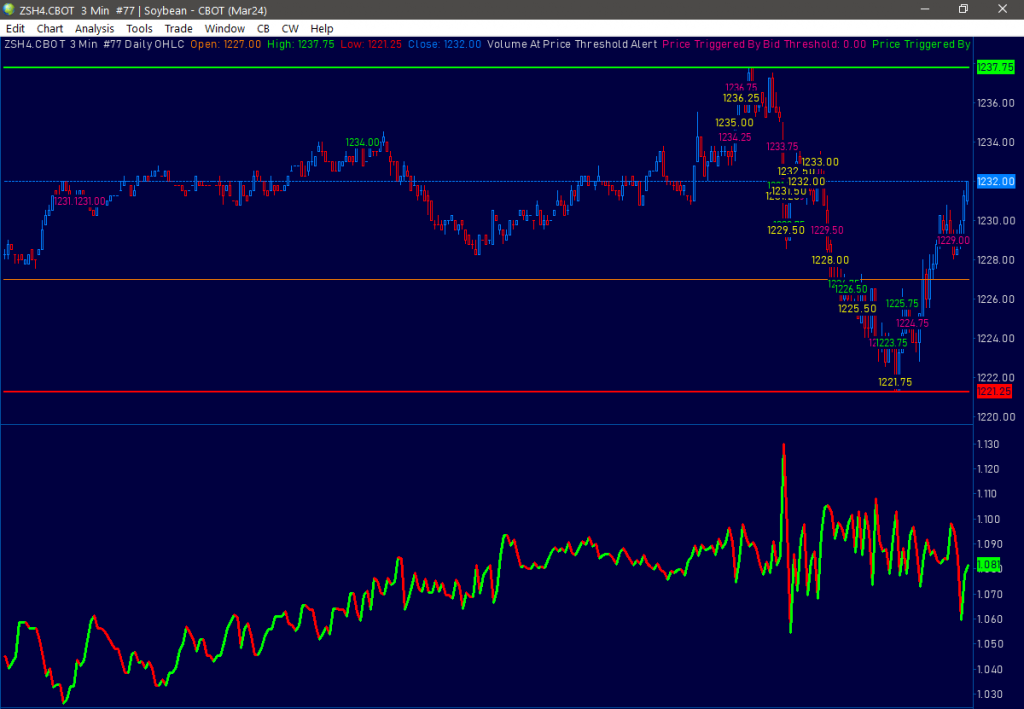
In the world of commodities trading, the soybean crush spread stands as a critical indicator of profitability within the soybean processing industry. Understanding this spread, its influencing factors, and effective trading strategies can be pivotal for traders and investors. Let’s delve deeper into what the soybean crush spread entails and how one can navigate this market for profitable outcomes.
What is the Soybean Crush Spread?
The soybean crush spread represents the margin or profit potential derived from processing soybeans into their primary components: soybean meal and soybean oil. This spread calculation involves simultaneously purchasing soybeans and selling the processed products, serving as a vital metric for assessing the profitability of soybean processing.
Factors Affecting the Crush Spread:
Soybean Prices:
- Impact of weather conditions, crop reports, and global supply and demand dynamics on soybean prices directly influence the crush spread.
Soybean Meal and Soybean Oil Prices:
- Factors such as demand for livestock feed, protein sources, cooking oils, biodiesel production, and global market trends significantly impact the prices of derived products, thus affecting the spread.
Processing Margins and Operational Costs:
- Efficiency, operational costs, labor expenses, and transportation costs associated with soybean processing facilities play a crucial role in determining the crush spread.
Global Supply and Demand Dynamics:
- Shifts in crop yields, changes in dietary preferences, economic conditions in major consuming countries, and overall market balance directly influence the soybean market and the crush spread.
How to Trade the Crush Spread Profitably?
Market Analysis:
- Utilize fundamental analysis, keeping an eye on crop reports, weather conditions, and global demand trends impacting soybeans and their derived products.
Price Analysis:
- Employ technical analysis and historical price trends to identify potential entry and exit points for trades, utilizing price movements and indicators.
Spread Calculation and Risk Management:
- Continuously calculate the crush spread and manage risk through strategies like stop-loss orders, options, and futures contracts to hedge positions.
Understanding Seasonal Trends:
- Acknowledge the impact of seasonal variations, such as planting and harvesting seasons, on soybean prices and crush spreads for informed trading decisions.

Conclusion:
Navigating the soybean crush spread market requires a comprehensive understanding of the influencing factors, market dynamics, and strategic trading approaches. By staying informed about market conditions, employing effective analysis, and implementing risk management strategies, traders can position themselves to trade the crush spread profitably in this dynamic commodity market.
Free Soybean Crush Reference Guide by the CME:
https://www.cmegroup.com/education/files/soybean-crush-reference-guide.pdf
How Market Makers Use VPIN to Manage Inventory RiskDay Trading Futures Trading
Main Cause for Anxiety in Traders with ADHD: Ignoring Known Market MechanicsTrading Psychology
Create your own virtual trading floor assistant using audio alerts in Sierra ChartDay Trading Futures Trading
Understanding Risk Management: Introducing the Kelly Criterion Calculator for TradersFutures Trading
Digital Nomad Trader? Embracing Freedom by Traveling Around the World!Futures Trading
Navigating Prop Firm Trading Taxes: A Comprehensive Guide for Independent Contractors in the U.S. and BeyondFutures Trading
Decoding the WTI Crude Oil Crack Spread: Types, Influential Factors, and Trading Strategies in Energy MarketsFutures Trading
Unlocking the Soybean Crush Spread: Understanding, Influencing Factors, and Profitable Trading StrategiesFutures Trading
Unpacking the Efficacy of Bookmap Indicator in Financial Markets: Does Order Book History Really Matter?Day Trading Futures Trading Proprietary Trading
How does ADHD affect traders and what techniques can I use to overcome these effectsTrader Psychology Trading Psychology











0 responses on "Unlocking the Soybean Crush Spread: Understanding, Influencing Factors, and Profitable Trading Strategies"